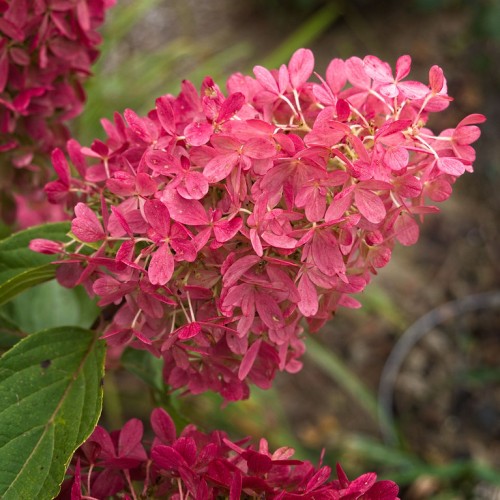
panicle hydrangea
Hydrangea paniculata 'Bokrathirteen' SWEET SUMMER
Also Known As - P.G. HydrangeaCycle:
Perennial
Watering:
Average
Hardiness Zone:
4
Flowers:
Flowers In Summer
Sun:
Filtered shade, Full sun
Soil:
Well-drained
Fruits:
Fruits In Autumn Ready In Summer
Leaf:
Yes
Growth Rate:
High
Maintenance:
Moderate
Drought Tolerant:
Yes
Care Level:
Medium
watering
Panicle Hydrangea should be watered once or twice a week in the first few weeks after planting. After that, depending on the season and climate, it should be watered thoroughly every 7-10 days during the growing season. In the winter, when the plant isn't actively growing, water should be cut back slightly. During cooler months, water once every 2 weeks, making sure the soil is moist but not saturated. Make sure to check the soil before adding water and only water if the top inch of soil is dry.
sunlight
The panicle hydrangea (Hydrangea paniculata 'Bokrathirteen' SWEET SUMMER) should be planted in a location that receives at least 4 to 6 hours of direct sunlight per day in order to bloom properly. Morning sun is best for this plant as it gives the flowers the warmth and energy they need for vigorous growth. It is important to ensure that the plant always receives a good amount of sunlight; however, too much intense sunlight during the afternoon is not advised as this may cause the blossoms to fade. To ensure the best growth and flower production, provide it with consistent sunlight, especially during the summer months when the flowers bloom. If you notice the blooms beginning to wilt, it is likely a sign of too much sun.
pruning
Panicle hydrangeas (Hydrangea paniculata 'Bokrathirteen' SWEET SUMMER) require light pruning once per year in late winter or early spring. It is best to wait until given buds have started to swell at the base of the stems before pruning. This will help to ensure a full bloom of flowers later in the season. When pruning, remove any dead or diseased wood, as well as any flower buds that do not appear healthy. Shorten the overall height of each stem by 1 third and shorten side stems by 1 half. Additionally, remove some of the thickest canes at ground level or just below. This should help to open up the plant and allow for better air circulation. Finally, make sure to clean and sterilize all pruning tools with a solution of rubbing alcohol and water before and after the pruning process. This can help prevent the spread of disease and encourage healthy blooming habits for the plant.
